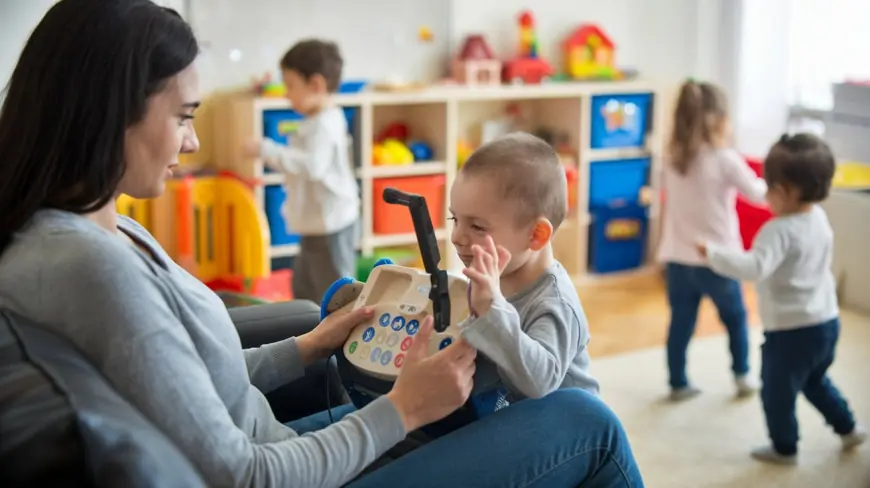What Is the Difference Between Emergency and Short-Term Foster Care?
Emergency foster care offers immediate short-term safety for children in crisis, while short-term foster care provides stable, temporary support during planned transitions to a permanent home.

When a child or young person cannot remain safely in their home, the child protection system in Australia has several types of foster care placements to meet their immediate and ongoing needs. Two of the most important and commonly used are Emergency (or Crisis) Foster Care and Short-Term Foster Care.
Although both provide safe, nurturing homes for children in need, they serve very different purposes. Understanding these differences is crucial for potential foster carers, families, and anyone working within the care system.
Emergency Foster Care
Purpose and Role
Emergency foster care exists to give children immediate safety and stability when they are removed from dangerous or high-risk situations. This might happen because of sudden family violence, neglect, abuse, a parent’s illness, or other urgent crises.
Emergency carers are often called with little or no warning, sometimes at night or on weekends, and must be ready to welcome a child into their home on short notice. The main focus at this stage is protection, comfort, and reassurance while child protection workers decide the next steps.
Duration
Emergency placements are short by design—anywhere from a single night to a few weeks. The aim is not to keep a child in emergency care for long, but to stabilise their situation until a more suitable arrangement can be made, whether that’s short-term foster care, reunification with family, or another placement type.
Characteristics of Emergency Care
-
Urgency – Placements can occur at any hour, often with minimal background information.
-
Flexibility – Carers must adapt quickly to different ages, backgrounds, and needs.
-
Immediate Support – Priority is placed on meeting physical and emotional needs right away.
Short-Term Foster Care
Purpose and Role
Short-term foster care provides children with a stable, nurturing environment while a longer-term plan is worked out. The reasons a child may enter short-term care vary—some families are working through challenges with the goal of reunification, while in other cases the child is waiting for a permanent foster placement, guardianship arrangement, or adoption.
Short-term carers help maintain a sense of normalcy and consistency for children during a period of transition. This stability can be vital for emotional and behavioural wellbeing, especially if a child has experienced upheaval or trauma.
Duration
Short-term foster care can last from two weeks up to around two years. While this is still considered temporary care, it is significantly longer than emergency placements and allows for more structured support and relationship-building.
Characteristics of Short-Term Care
-
Planned Transitions – Carers work closely with caseworkers to prepare for the child’s next home.
-
Routine and Stability – Children are encouraged to attend school, build friendships, and develop positive routines.
-
Goal-Focused Support – Care is delivered with a clear aim, whether reunification, long-term care, or other permanency options.
Key Differences at a Glance
| Feature | Emergency Foster Care | Short-Term Foster Care |
|---|---|---|
| Purpose | Immediate safety in crisis situations | Stability while longer-term plans are made |
| Typical Duration | One night to a few weeks | Two weeks to two years |
| Notice Before Placement | Very little, sometimes none | Usually some notice and preparation |
| Focus | Urgent protection and comfort | Consistent care and preparation for transition |
| Level of Planning | Minimal due to urgency | Coordinated and goal-oriented |
How the Two Work Together
Emergency and short-term foster care are not separate systems—they are complementary parts of the same safety net. A child might enter emergency care first, then move into short-term care once their immediate safety is secured and a clearer plan is in place.
For example:
-
A child removed from a home late at night due to family violence might stay with an emergency carer for two nights.
-
After initial assessment, the child could then be placed with a short-term carer for several months while the family receives support services or alternative care arrangements are finalised.
Why Understanding the Difference Matters
For prospective foster carers, knowing the difference between these two types of care helps in deciding which role might suit their lifestyle, skills, and availability. Emergency carers need to be adaptable, ready to respond instantly, and able to handle the unpredictability of short stays. Short-term carers require the capacity to provide stability over weeks or months, building trusting relationships while preparing for planned transitions.
Both roles are equally important and deeply rewarding, contributing to the safety, wellbeing, and future of children in need. By providing either urgent protection or transitional stability, foster carers make a life-changing difference—not only to the child, but to their family and the wider community.
What's Your Reaction?
 Like
0
Like
0
 Dislike
0
Dislike
0
 Love
0
Love
0
 Funny
0
Funny
0
 Angry
0
Angry
0
 Sad
0
Sad
0
 Wow
0
Wow
0
















































